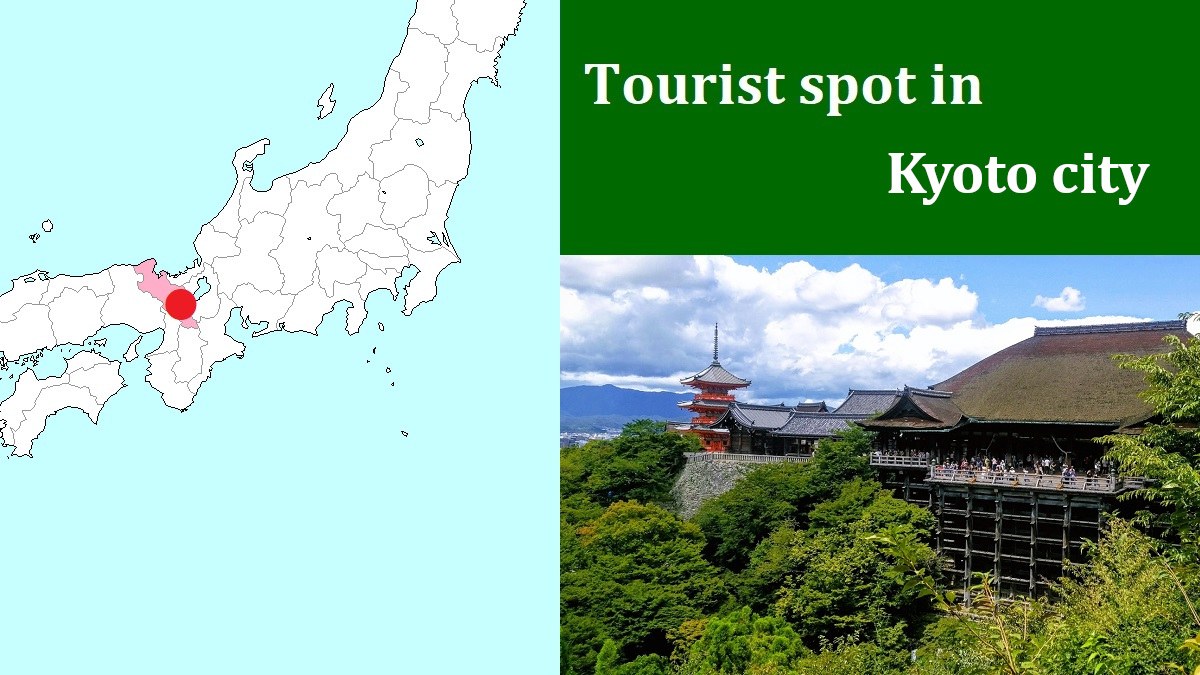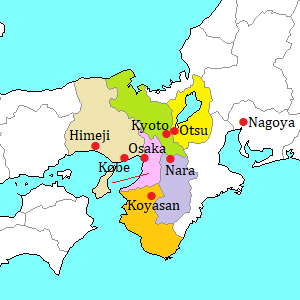Ninnaji temple [仁和寺]
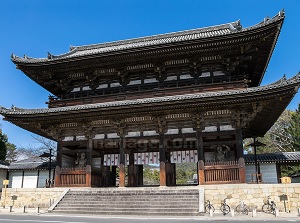
Niomon of Ninnaji
Photo by inariage.com
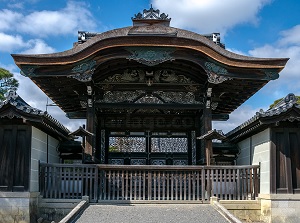
Chokushimon of Ninnaji
Photo by inariage.com
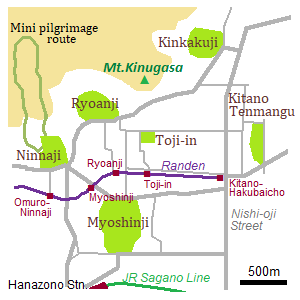
Ninnaji is a temple of Shingon Buddhism, one of major Japanese Buddhism schools.
It is located about 0.7 km southwest of Ryoanji.
This temple is one of 17 constructions of "Historic Monuments of Ancient Kyoto" designated as a World Heritage Site.
The construction of this temple was started by Emperor Koukou in 886.
He died in the following year, but the enthroned Emperor Uda completed the temple in 888.
In 897, Emperor Uda abdicated the throne to his son (Emperor Daigo), and he became a priest of Ninnaji.
Since that, the chief priests of this temple had been the members of the imperial family until the 19th century.
All of the buildings in the temple were destroyed by fire in the civil war in 1467.
The buildings were rebuilt by Edo Government from the 1620s to 1640s.
At that time, Kyoto Imperial Palace was also rebuilt, so some old buildings were moved and rebuilt in Ninnaji.
In the precinct, there are several buildings.
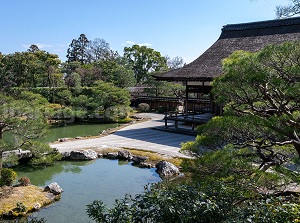
Shinden & the Japanese garden in Ninnaji
Photo by inariage.com

A room in Shinden in Ninnaji
Photo by inariage.com
The precinct is about 250 meters from east to west and about 350 meters from north to south.
There is Niomon gate (二王門) on the south side.
The height is about 19 meters and it is one of the biggest gates in Kyoto.
After passing through Niomon, there is Goten (御殿, Palace) on the left side.
It was the area where Emperor Uda lived, and the chief prists of Ninnaji has been in this area.
Chokushi-mon gate (勅使門) is set up, and was the gate for the Emperor.
In Goten, there are four buildings and the central one is Shinden (宸殿).
There is a Japanese garden around Shinden.
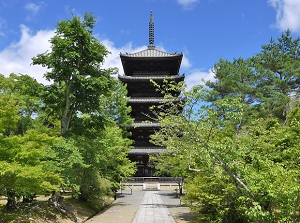
Five-stories Pagoda in Ninnaji
Photo by Kyoto Free Photo
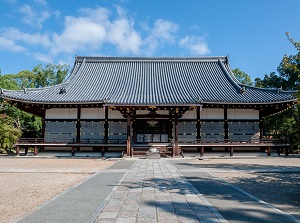
Kondo in Ninnaji
Photo by inariage.com
The north part of the precinct is the main area as Buddist temple.
To go to the area, we pass through Chumon gate (中門).
There are Five-storied Pagoda (五重塔) on the right hand and Kannon-do temple (観音堂) on the left hand.
At the north end, there is Kondo temple (金堂).
Three statues of Amida Buddha are enshrined as the Principal image of this temple.
It is the moved former Shishinden Palace in Kyoto Imperial Palace built in 1613, and is designated as a national treasure.
Mieido temple (御影堂) is to the west of Kondo.
It is the temple built with materials used in the former Seiryoden palace in Kyoto Imperial Palace, and is designated as an important cultural property.
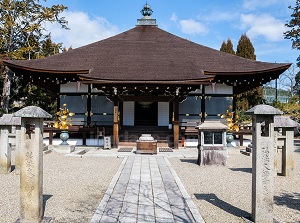
Mieido in Ninnaji
Photo by inariage.com
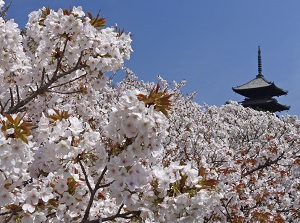
Omuro-zakura in Ninnaji
Photo by Kyoto Free Photo
Ninnaji has about 500 cherry trees.
There are a few kinds of cherry trees, so we can enjoy the cherry blossoms from the end of March to the middle of April.
Especially, there are a unique kind of cherry trees named as Omuro-zakura.
About there are 200 trees of Omuro-zakura, and the date of full blooming is around the middle of April and is more than a week later than popular cherry blossoms (Somei-Yoshino).
The pilgrimage of 88 temples in Shikoku Island has been famous since the middle ages.
But it had been very difficult for common people to do it.
So the chief priest of Ninnaji set up the mini pilgrimage route to the north of this temple in 1827.
There are 88 small temples along a walking trail about 3 km long in the hilly area.
(The length of real route in Shikoku is about 1,400 km.)
Under each temple, the soil in the real temple with same name in Shikoku are lain.
How to get here
By route bus, from Kinkakuji-mae stop, about 7 minutes to Omuro-Ninnaji stop
By Randen tram (Kitano Line of Keifuku Electric Railway), about 5 minutes from Kitano-Hakubaicho to Omuro-Ninnaji.
Then about 2 minutes walk from there.

